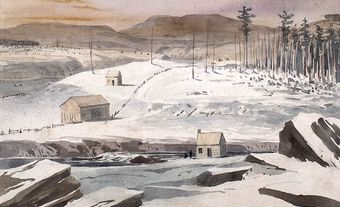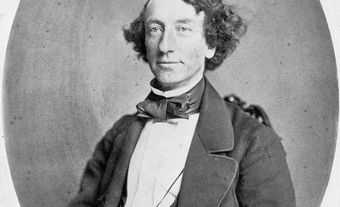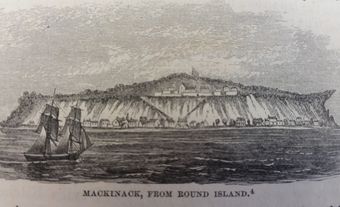Battle of Lacolle Mill
First Skirmish at Lacolle Mill, 1812
This brief skirmish at Lacolle Mill (now Lacolle, Que) during the War of 1812 marked the end of the American campaign to invade Lower Canada and take Montréal in the fall of 1812. In the summer of 1812, US Major General Henry Dearborn collected 2000 regular soldiers and 3000 militiamen at Plattsburgh, New York, for the coming offensive. He arrived in Plattsburgh on 10 November, already very late in the campaign, and by 19 November he was in Champlain, New York. American brigadier general Zebulon Pike crossed the border into Lower Canada early the next day, with 650 regulars and a party of Aboriginal warriors. Their plan was to suppress British allies active in the area, but instead they moved in on a British guardhouse at Lacolle. They were met by a modest force of only 25 militiamen and 15 Aboriginal men.
Clearly outnumbered, the allies soon withdrew, allowing the Americans to destroy the guardhouse and several buildings before Pike and his men moved on to the frontier. It was not long before British lieutenant colonel Charles de Salaberry responded to the attack with 100 members of the Canadian Voltigeurs and 230 Kahnawake warriors, who set off in pursuit of the Americans. As Pike approached the border, his force suffered a major setback when it came under friendly fire from American militia, killing 2 men and wounding 12 others. Pike returned to Champlain, and Dearborn, sensing potential defeat, cut his losses and retired to Plattsburgh for the winter.
Battle of Lacolle Mill, 1814
Following a disastrous American attempt to take Montréal in the fall of 1813, Major General James Wilkinson made a last-ditch effort to achieve success on the northern front in March 1814. His plan was to lead 4000 men from Plattsburgh, New York, and Burlington, Vermont, into Lower Canada. His division included 11 infantry regiments, the First US Rifle Regiment, the US Regiment of Light Dragoons, and 11 field guns. Brigadier General Alexander Macomb supported the operation by briefly occupying Philipsburg, Lower Canada, on 22 March.
Wilkinson's force had its first encounter with the British at Lacolle. The garrison under Major Richard Handcock included 180 regulars, a battalion of Royal Marines, a detachment of the rocket corps of the Royal Marines, and the Canadian Voltigeurs. Handcock positioned his forces around a three-storey mill on the south side of the Lacolle River and a wooden barracks on the north side. Another 550 Royal Marines and regular infantry were stationed at L'Île-aux-Noix, 11 kilometres to the north.
Wilkinson crossed the frontier early on 30 March and occupied Odelltown. By 8:00 AM the Americans were near Lacolle. In the early afternoon, Wilkinson sent 1200 men to the west and north of Lacolle to outflank the British and cut the road to L'Île-aux-Noix. Snow and poor conditions made for difficult terrain, and the Americans were only able to get one 12-pounder gun and a howitzer into position. The delays allowed the British flank companies of the 13th Foot to be sent up river to reinforce the position at Lacolle. Wilkinson's gunfire proved ineffective, and his infantry fell back under a hail of fire.
A fierce firefight ensued, but ended with the British withdrawing. The Canadian Fencibles and Voltigeurs arrived next, along with several Aboriginal allies. This larger force went after the American guns, which were taken and spiked before the British were pushed back once more.
Weather conditions worsened as evening fell, and Wilkinson was forced to call off the attack. The British suffered 11 killed, 46 wounded and 4 missing, while the Americans lost 13, with 51 wounded. With another failure, the Americans returned to Champlain, and Wilkinson's days as a commander were over. He was replaced by Major General George Izard, and returned home to face a court martial, his military career ended.

 Share on Facebook
Share on Facebook Share on X
Share on X Share by Email
Share by Email Share on Google Classroom
Share on Google Classroom


